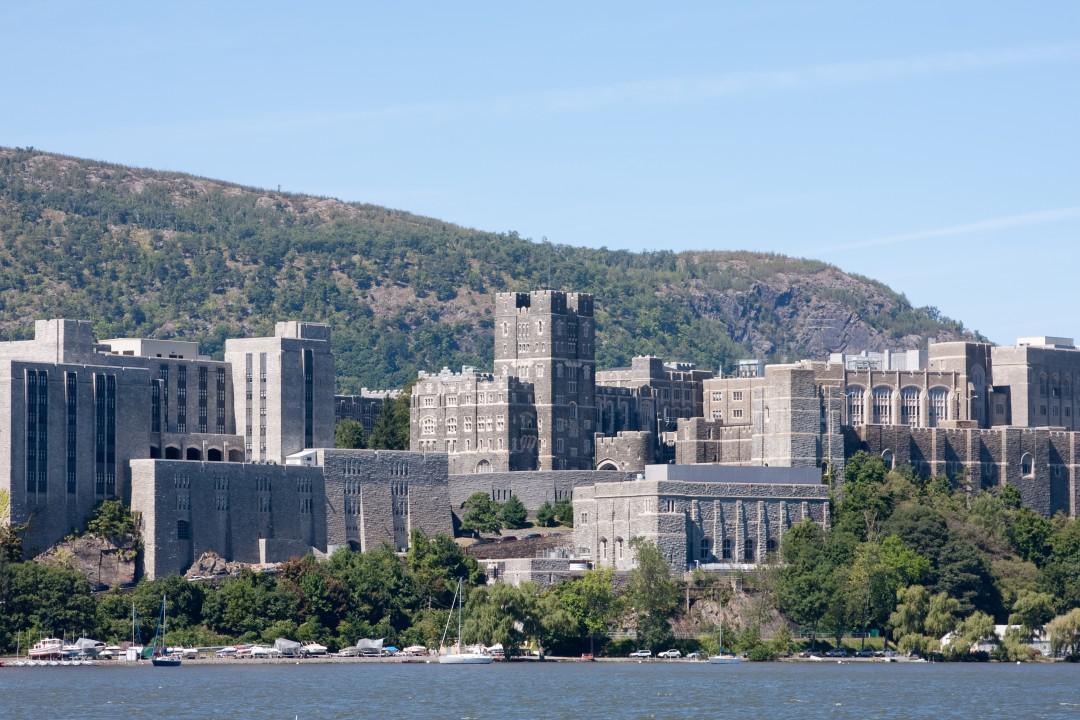Hope all goes well… “So let me tell you how this goes,” said the senior mid-fielder to Jackson the night before the Army/Navy lacrosse game. “The first ten minutes is not lacrosse, it’s not even football, it’s just this insanely intense period with everyone trying to take one another out,” he continued, mentoring my son. “Ten minutes in, one team calls a timeout, both coaches calm everyone down, and that’s when the lacrosse starts,” he said. “At halftime, whichever team is behind will go into the locker room and get amped up, so that who wins the second half is anyone’s guess – that’s just how Army/Navy goes every single year,” he said. -- I wrote that back in 2021. Each year is the same indeed. Navy (ranked #45) beat Army (ranked #5) in overtime yesterday. 12 goals to 11. Sudden death. Insane. Electric.
Marcel Kasumovich, One River’s Head of Research, wrote an excellent piece titled: Regulators are Running a Crypto Sprint [here]. What a difference a year makes!
Overall:“Let me now say a few words to those countries who are currently sitting on the fence, perhaps seeing an opportunity to gain by preserving their relationship with Russia and backfilling the void left by others. Such motivations are short-sighted,” said America’s Treasury Secretary on April 13th. “Going forward, it will be increasingly difficult to separate economic issues from broader considerations of national interest, including national security,” continued Yellen, confirming our suspicions. The era of monetary policy dominance - when the actions of central bankers dominate the economy, markets and even politics – has passed. Politicians and politics are now ascendant. The impact from this on fiscal policy, domestic politics, and geopolitics will be as profound as it will be long-lasting. Buckle up. “Let’s be clear. The unified coalition of sanctioning countries will not be indifferent to actions that undermine the sanctions we’ve put in place,” explained Janet. China’s renminbi has been falling ever since. Naturally, the market must price the possibility that Beijing will suffer sanctions too. And if Germany now regrets strengthening Russia by buying Putin’s gas for all these years, in this new era, is it reasonable to expect the US to support China by trading so freely with Xi? Back in the era of monetary policy dominance, easy money led to debt expansion and market booms, which provoked rate hikes, recession, followed by renewed easing. Rates were set to lower-highs and lower-lows in each cycle, a secular trend. And in each cycle, debt and leverage rose in the aggregate, shifting around sectors like a hot potato. But the whole process was generally mean reverting. Politics does not exhibit the same kinds of mean reverting properties once politicians awaken, reassert their power. That process has only just started. And it has begun in a period when the Fed is no longer able to ease policy. It is now caught between trying to engineer either a soft or a hard landing. The “fragmented political and economic situation” makes supply chains “fragile” and “less globalization means higher inflation and less productivity,” explained Fed Chair Powell, attempting to conduct monetary policy in a world growing increasingly political.
Week-in-Review (expressed in YoY terms): Mon: Easter Monday = quiet markets, Fed’s Bullard says 75bp hike could not be ruled out, CDC ends mask mandate on planes after court ruling, verbal intervention from Kuroda and FinMin Suzuki causes brief dip in USDJPY before recovering, Mexico congress rejects energy reform bill, World Bank cut 2022 global GDP forecast to 3.2% (4.1%p), Singapore Non-oil expts 7.7% (1.6%e), China IP 5% (4%e) / ret sales -3.5% (-3%e) / 1Q GDP 4.8% (4.2%e), Indonesia expts 44.36% (24.65%e) / impts 30.85% (18.45%e), Turkey house prices 96.41% (77.49%p), US NAHB housing mkt index 77 as exp, S&P flat; Tue:: Biden pledged more artillery (alongside UK and Canada) for Ukraine, IMF cut 2022 global growth forecast to 3.6% (from 4.4%), Fed’s Evans says will probably go beyond neutral / two 50bp hikes could make sense, Fed’s Bostic says some signs of inflation cooling and 75bp hike not on his radar / wants Fed funds to be 1.75% by year end (mkt pricing 2.5%), Norway trade surplus hits all-time high, Japan fin min voices concerns about JPY weakness as USDJPY moves ~1.5% higher to new 20y high, Zelensky says Russia launched new campaign focused on conquering the Donbas region, RBA mins slightly hawkish, SNB chairman sees infl rise as temporary, Poland PPI 26.3% (20.9%p), US housing starts 1793k (1740k exp), S&P +1.6%; Wed:: BOJ announced new round of unscheduled bond buying over 4 days as 10y yields stayed elevated at 0.25% upper limit, Russia says they gave Ukraine a document and is awaiting response providing signal that they are still seeking a diplomatic path, PBOC set CNY fixing 100bp weaker than expected, China indicates they will maintain and increase strong ties with Russia, NFLX drops 35% after reporting significant drop in users, ECB’s Kazaks says rate increase in July is possible, Riksbank gov Ingves gives clearest signal yet that CB is preparing for substantial policy pivot at next meeting (4/28), PBOC kept MLF unch (5bp cut exp), French fin min says Russian oil embargo to Europe was in the works, Japan expts 14.7% (17.1%e) / impts (31.2% (28.9%e), German PPI 30.9% (30%e), S. Africa CPI 5.9% (6%e) / Core CPI 3.8% (3.7%e), EU IP 2% (1.5%e), Canada CPI 6.7% (6.1%e), US PPI 26.7% (28%e), S&P -0.1%; Thur:: Le Pen failed to close the gap during the final presidential debate, Powell confirms a 50bp hike is on the table for May / market moves to price 3 full 50bp hikes at next 3 meetings, Fed’s Daly failed to push back on possibility of 75bp hike sending yields to highs and weighing on equity prices, ECB’s de Guindos sees no reason why APP should not end in July, Russia claims to have captured Mariupol, Russia CB gov says will consider deeper easing in the months ahead, floods / rolling blackouts in South Africa cause ZAR to weaken, strong TSLA earnings lift sentiment but broader market fails to hold gains, New Zealand CPI 6.9% (7.1%e), EU final CPI 7.4% (7.5%e), US Philly Fed 17.6 (21.4e), US init claims 184k (180k exp), US leading index 0.3% as exp), EU cons conf -16.9 (-20e), S&P -1.5%; Fri:: PBOC gov Yi Gang reiterated that policy will stay accommodative, Russia continued heavy shelling in eastern Donbas region, CNH continues to weaken, BOC Macklem didn’t rule out hiking more than 50bp, US markets move to price 50bp hikes at the next 4 Fed meetings, BCB intervened to stem BRL weakness for first time in a while, Musk says he has secured funding to buy TWTR, Indonesia bans exports of Palm oil, UK cons conf -38 (-33e), Japan CPI 1.2% as exp, EU mfg PMI 55.3 (54.9e) / serv PMI 57.7 (55e) / comp PMI 55.8 (53.9e), UK mfg PMI 55.3 (54e) / serv PMI 58.3 (60e) / comp PMI 57.6 (58.7e), US mfg PMI 59.7 (58e) / serv PMI 54.7 (58e) / comp PMI 55.1 (57.9e), S&P -2.8%; Sat/Sun: Navy Lacrosse beat Army 12-11 in overtime, French Presidential election.
Weekly Close: S&P 500 -2.8% and VIX +5.51 at +28.21. Nikkei +0.0%, Shanghai -3.9%, Euro Stoxx -1.4%, Bovespa -4.4%, MSCI World -2.6%, and MSCI Emerging -3.4%. USD rose +6.7% vs South Africa, +2.5% vs Chile, +2.1% vs Australia, +2.0% vs China, +2.0% vs Brazil, +1.7% vs Sterling, +1.6% vs Yen, +1.3% vs Mexico, +1.2% vs Ethereum, +0.8% vs Canada, +0.7% vs Turkey, +0.4% vs India, +0.3% vs Bitcoin, +0.2% vs Euro, and +0.1% vs Indonesia. USD fell -8.4% vs Russia, and -0.2% vs Sweden. Gold -2.1%, Silver -5.7%, Oil -4.1%, Copper -2.9%, Iron Ore -2.1%, Corn +0.7%. 5y5y inflation swaps (EU +5bps at 2.43%, US +6bps at 2.80%, JP +9bps at 0.75%, and UK +9bps at 4.11%). 2yr Notes +21bps at 2.67% and 10yr Notes +7bps at 2.90%.
YTD Equity Indexes (high-to-low): Brazil +23.1% priced in US dollars (+6% priced in reais), Colombia +21.2% priced in US dollars (+14.4% priced in pesos), Saudi Arabia +20.1% in dollars (+20% in riyals), Turkey +19.4% (+33.1%), UAE +19.4% (+19.4%), Chile +15.4% (+13%), Indonesia +8.3% (+9.8%), Singapore +5.7% (+7.6%), Norway +5.1% (+6.9%), Venezuela +1.5% (-1.8%), Greece +1.2% (+6.3%), Israel +1% (+4.6%), Mexico +0.9% (-0.2%), Thailand +0% (+2%), Australia -0.1% (+0.4%), South Africa -0.5% (-2.5%), Canada -0.7% (-0.2%), Portugal -0.9% (+4.7%), Argentina -1.2% (+9.8%), Malaysia -1.8% (+2.2%), UK -3.4% (+1.9%), India -3.7% (-1%), Philippines -4.3% (-1.7%), Spain -5.4% (-0.7%), Czech Republic -5.9% (-3.3%), Belgium -8% (-2.8%), Switzerland -9.1% (-4.8%), S&P 500 -10.4% (-10.4%), MSCI World -10.8% (-10.8%), Denmark -10.9% (-6.4%), New Zealand -11.6% (-8.6%), Taiwan -11.6% (-6.6%), HK -12.3% (-11.8%), France -12.9% (-8%), Korea -13.2% (-9.2%), Russell -13.6% (-13.6%), Netherlands -14.9% (-10.1%), Germany -15.2% (-11%), Italy -15.4% (-11.2%), Euro Stoxx 50 -15.4% (-10.7%), Japan -15.9% (-5.9%), Finland -16.1% (-11.9%), China -17.1% (-15.2%), Poland -17.3% (-12.1%), Ireland -17.4% (-12.8%), Sweden -17.9% (-13.4%), NASDAQ -17.9% (-17.9%), Austria -18.7% (-14.7%), Hungary -19.6% (-14.9%), Russia -43% (-41.1%).
Team Market Chats: “The data looks mixed, but things like the backlog of ships loading and unloading in Shanghai gives me pause,” wrote Chase, pinning a historical graph to the chat that was not the kind of thing you’d want to see if supply chains were unkinking. “The NFIB survey shows small businesses are more pessimistic about the business outlook and about inflation than they were in the 1970s,” wrote Lindsay, pinning a chart going back to 1974. “The internals of the Philly Fed manufacturing survey are flashing recession,” wrote Marcel, pinning a chart of forward demand and prices.
Team Market Chats II: “There are two periods when such a decline in forward orders did not accompany a recession – 1988 and 1995,” continued Marcel in the chat. “In both cases, price pressures moderated sharply, and demand recovered. The 1974 recession is an interesting one where the price moderation was very modest, demand recovered, inflation stuck at a high level, and rolling inflationary recessions followed. The burden of proof is increasingly on those who see an elongated expansion as that is not in the data any longer,” wrote Marcel.
Team Market Chats III: “There’s a growing consensus the Fed will keep going until the market breaks,” wrote Marcel, connected throughout global policy circles. “High-yield spreads are almost a target variable. They’re not afraid of equity/credit downside,” he wrote. “This has been getting a lot of traction in the past 24-48hrs,” replied Chase. “Everyone I talk to: Is inflation slowing much/faster than the central bank expected? No. Are we seeing the growth slowdown that will scare central banks? No. Are financial assets panicking in a way that will scare central banks? No,” wrote Chase. On our Team Markets Chat.
Choices: “Discretionary tech will get hammered through year end,” said the CIO. Netflix had reported, its stock in free fall. “Food, energy, and rent are all up more than CPI. Discretionary tech is fun, not needed, and these things get tossed when money gets tight,” he said. “Say 5% needs to come out of your budget, what goes?” he asked. “I saw this dynamic before the 2000-01 recession, which was more normal, not like 2008-09 or 2020,” he said. “I don’t think we’ll have a recession as companies need every available worker, but inflation will force the average person to make choices, cuts.”
Mara: “Maybe write something about how full life is,” said Mara, Saturday evening. I was racing to catch a flight to Singapore after the Army/Navy game, knowing I’d be reading/writing all-night. The week had been insane, they all are these days. Markets, business, deals, family, friends. The pressure to publish, my burden, a blessing. It’s all good, great in fact. “Life won’t always be this full, but right now it is, explore that -- you’re not alone, if it’s full for you, it’s that way for others,” said Mara. She’s got great instincts, almost always right.
Anecdote: “There’s plenty of time to rest when you’re dead,” he told me, the two of us pushing his canoe into a stream, pre-dawn, a misty Autumn morning, in my late twenties. He was Marine Infantry, retired, a couple decades my senior, and never talked about his tours. A quiet man, hard, frightening in a way, but somehow gentle. Like he’d seen things that couldn’t be unseen, done things he couldn’t undo, and in the end chose life, pressing ahead, in search of something else. When he walked, you could tell it hurt, not sharp, a dull kind of pain you’d see in someone much older. He was a friend of my father, who had held a weekend reunion. Over dinner, I’d learned he woke up before sunrise every day, went off on his own. I invited myself. He seemed surprised but said sure. It wasn’t a typical stream, more like a chaotic maze of narrow channels with bushes and brambles separating them all. Some scraggly trees. The water barely moved; beavers dammed it downstream. We hardly spoke. The stars faded slowly, dawn. I copied the movements of his paddle. Two, maybe three slow strokes, then we’d place them across our laps, deliberately, gliding in silence but for their drip, drip, drip. I suppose we were stalking, hunting, but with no inclination towards violence. He’d signal with his head, the subtlest movements, toward something in the brush, or in the water, crystal clear. Drip. Drip. Drip. There were fewer birds than I’d have guessed, fish too. But it felt like he found them all. I couldn’t see his face but could tell he was pleased with each discovery. Like he was doing an important job and doing it well. With purpose. Hours passed, and then just like that, we emerged from the maze. Pulled the canoe up on shore. I thanked him. “There’s plenty of time to rest when you’re dead,” he said again. That was his gift to me. It’s what he had to give. And I’ve always been grateful for it.
Good luck out there,
Eric Peters
Chief Investment Officer
One River Asset Management
Disclaimer: All characters and events contained herein are entirely fictional. Even those things that appear based on real people and actual events are products of the author’s imagination. Any similarity is merely coincidental. The numbers are unreliable. The statistics too. Consequently, this message does not contain any investment recommendation, advice, or solicitation of any sort for any product, fund or service. The views expressed are strictly those of the author, even if often times they are not actually views held by the author, or directly contradict those views genuinely held by the author. And the views may certainly differ from those of any firm or person that the author may advise, drink with, or otherwise be associated with. Lastly, any inappropriate language, innuendo or dark humor contained herein is not specifically intended to offend the reader. And besides, nothing could possibly be more offensive than the real-life actions of the inept policy makers, corrupt elected leaders and short, paranoid dictators who infest our little planet. Yet we suffer their indignities every day. Oh yeah, past performance is not indicative of future returns.





